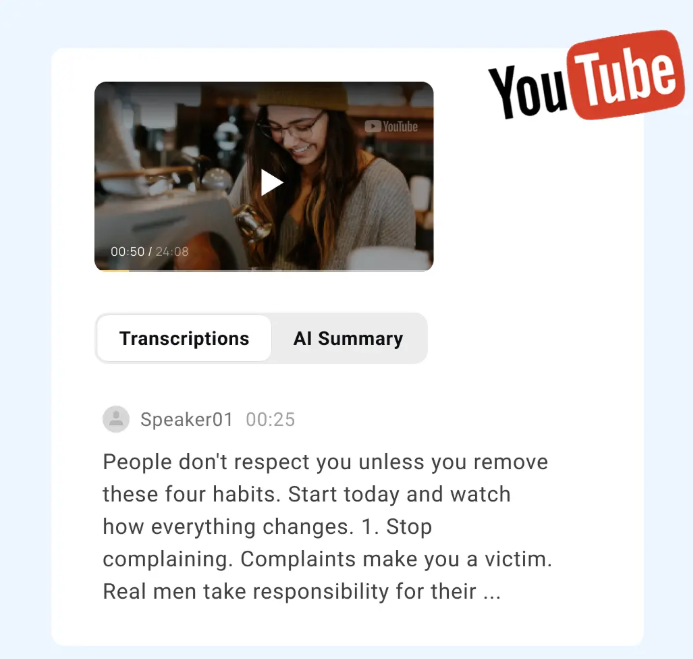We may associate fast-talking with a veritable torrent of information. However, a new study shows fast talkers communicate less with each word speech therapy unit. And while slow talkers use words loaded with more meaning. Hence we all communicate about the same volume of information, regardless of how we pace our speech.
Table of Contents
The Secret Life of Speech
Speech is about communication not speed, so we end up communicating at about the same rate regardless of whether we talk fast or more slowly because faster speech packs less information into the conversation.
Uriel Cohen Priva, assistant professor in speech therapy unit, Linguistic and Psychological Sciences at Brown University and author of the study published in the March issue of Cognition summarised the findings of the study, “We tend to converse within a narrow channel of communication data so that we do not provide too much or too little information at a given time.” Cohen Priva went on to say, “It seems the constraints on how much information per second we should transmit are fairly strict, or stricter than we thought they were.”
Cohen Priva also measured how often each speaker used the passive voice, compared to the active voice. Demographic data were then overlaid to account for each subject’s age, gender, and the speech rate of the other member of the conversation. And other possible factors to arrive at the final set of statistics.
According to current information theory, complicated syntax, such as the passive voice, conveys greater “structural information”. In contrast, rarer words convey richer “lexical information.” Cohen Priva found those who talk at a slower pace tend to use rarer, more unexpected words that carry more complicated meanings. And while those who speak quickly select more common words and use simpler syntax.
The mechanism governing information transfer rates in our speech remains elusive according to Cohen Priva. It may stem from either a listener’s difficulty in processing and understanding speech delivered at a fast a pace or from a speaker’s difficulty in assembling and speaking too much information too quickly.
Cohen Priva also measured how often each speaker used the passive voice, compared to the active voice. Demographic data were then overlaid to account for each subject’s age, gender, and the speech rate of the other member of the conversation. And other possible factors to arrive at the final set of statistics.
Analysing Speech Patterns
Cohen Priva’s study was structured around two independent sources of conversational data: the Buckeye Corpus, which comprises 40 lengthy interviews, and the Switchboard Corpus, which holds 2,400 annotated telephone conversations. Overall, the data set covered the speech of 398 people. Each snippet of speech was analysed to measure the rate of information flow (how much lexical and structural information they communicated in a given time), together with the speech rate, how much they said in that time.
Analyzing the data set involved complex calculations to determine the relative frequency of words both in isolation. And in the context of the words preceding and following them. Cohen Priva then compared how long the study subject took to say each word on average compared to how long a particular speaker required.
Cohen Priva also measured how often each speaker used the passive voice, compared to the active voice. Demographic data were then overlaid to account for each subject’s age, and gender. And the speech rate of the other member of the conversation. And other possible factors to arrive at the final set of statistics.
At the conclusion of the study, Cohen Priva found the same statistically significant correlation held true: as speech sped up, the information rate declined. This held true across the two independent dimensions, lexical and structural. And both of the two independent data sources, Switchboard and Buckeye
Cohen Priva found a key difference involving gender that hints at why information transfer rates in our conversations are limited. It may be a socially imposed constraint for the listener’s benefit. While both men and women exhibited the main trend on average, men conveyed more information than women at the same speech rate.
“We could assume that there are widely different capacities of information per second that people use in speech. And that each of them is possible and you can observe each and everyone,” Cohen Priva indicated. “But had that been the case, then finding these effects would have been very difficult to do. Instead, it’s reliably found in two corpora in two different domains.”
Gender Could Be A Potential Explanation
Cohen Priva found a key difference involving gender that hints at why information transfer rates in our conversations are limited. It may be a socially imposed constraint for the listener’s benefit. While both men and women exhibited the main trend on average, men conveyed more information than women at the same speech rate.
Given there is nothing to indicate the ability to convey information at a given rate differs by gender. And Cohen Priva hypothesized women may be more concerned with making sure their listeners understand what they are saying.
Cohen Priva believes the study has the potential to shed light on the way people craft their conversations. One current theory is that people choose what they intend to say. And then slow their speech as they include rarer or more difficult words. But he indicated his data is consistent with a hypothesis that our overall speech rate dictates word choice. And syntax (e.g. if faster, then simpler).
Other studies have shown women are more likely than men to provide verbal cues like “uh huh” to confirm understanding as a conversation unfolds.
Summary
Cohen Priva believes the study has the potential to shed light on the way people craft their conversations. One current theory is that people choose what they intend to say. And then slow their speech as they include rarer or more difficult words. But he indicated his data is consistent with a hypothesis that our overall speech rate dictates word choice. And syntax (e.g. if faster, then simpler).
“We need to consider a model in which fast speakers consistently choose different types of words or have a preference for different types of words or structures,” Cohen Priva added.
To summarise, how one speaks appears directly related to how quickly one speaks.












